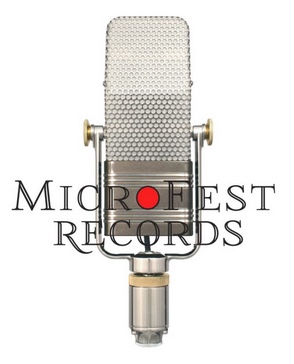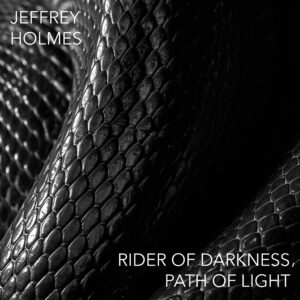Rider of Darkness Notes
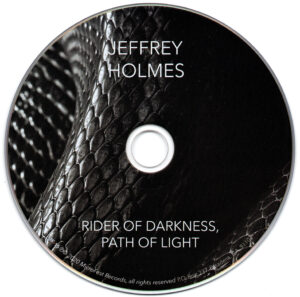
Track List
|1| Urðarmána [Moon of Fate] 2012 (12:37)
Nicholas Isherwood – bass baritone; Mark Robson – piano
|2| Hagall (Haglaz) [Hail] 2015 (20:08)
The Talea Ensemble: Barry Crawford – flute, piccolo; Stuart Breczinski – oboe, English horn; Marianne Gythfeldt – contrabass clarinet, piccolo clarinet; John Gattis – horn; Matthew Gold – percussion; Alex Lipowski – percussion; Lauren Cauley – violin; Elizabeth Weisser – viola; Chris Gross – cello; Greg Chudzik – bass; David Fulmer – conductor
|3| Thund [Thundering Waters] 2018 (11:27)
Jason Hardink – piano
Myrkriða, Ljósleiðá [Rider of Darkness, Path of Light] 2016 (25:38)
|4| Nátta (Night Falling)
|5| Myrkrida I (Rider of Darkness I)
|6| Dagan (Daybreak)
|7| Ljósleida I (Path of Light I)
|8| Mydr Nott (Middle of the Night)
|9| Myrkrida II (Rider of Darkness II)
|10| Haugaeldr (Grave Fire)
|11| Ljósleida II (Path of Light II)
|12| Myrkrida III (Rider of Darkness III)
|13| Ótta (Last Part of the Night)
|14| Myrkr (Darkness)
|15| Ljósleida III (Path of Light III)
|16| Sjóborg (Sunset)
|17| Hljodr (Silence)
|18| Lykd_Upphaf (End_Beginning)
Kirsten Ashley Wiest – soprano and percussion; Tara Schwab – flute, alto flute; Yuri Inoo – percussion; Michael Kudirka – guitar, additional percussion; Jeffrey Holmes – conductor, additional percussion
Program Notes
Urðarmána [Moon of Fate]:
The text of this monodrama for bass baritone and piano is in Old-Norse, and was mostly written by the composer, but also contains various fragments of text excerpted from ancient anonymous Norse Eddic poetry. This work is one continuous monodrama, comprised of nine songs, each with its own prelude. The overall shape of the work follows the dramatic nature of the text…which deals with mortality and destiny, wrath and acceptance, and violence and sublimity. The construction of the piece features various “lietmotives” representing aspects such as fate, the cold wind, rain, the moon, the sea, cliffs on a mountaintop, etc. These motives are bound together through the use of a unique non-octave and microtonal pitch language, and a symmetrical and proportional organization of form and phrase structures. Urðarmána is highly dramatic work, often violent, and traverses several scenes depicting the desolation of the ancient Nordic wilderness.
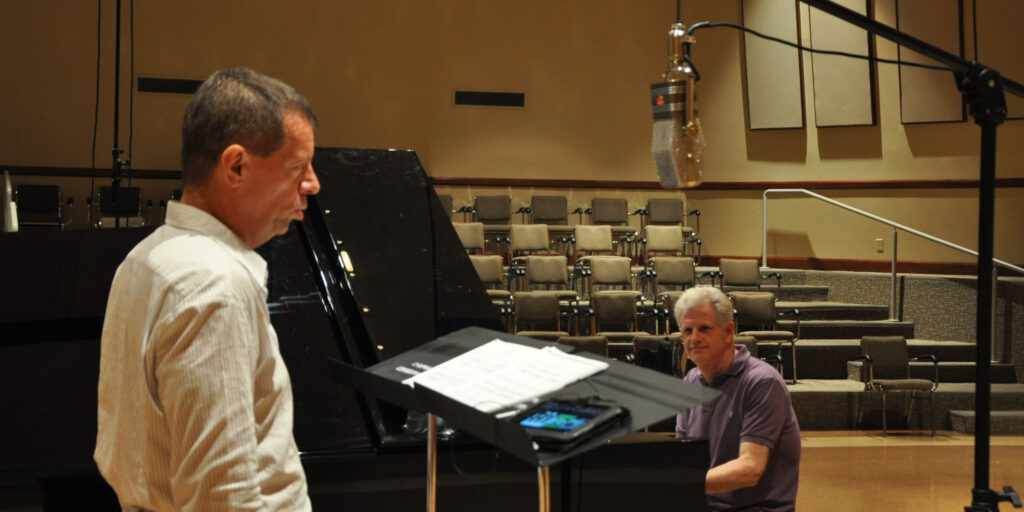
Nicholas Isherwood – bass baritone; Mark Robson – piano
Hagall (Haglaz) [Hail]:
The title “Hagall” comes from the Old-Norse Runic symbol for hail (as in hailstorm). Hagall is the first of the “Winter” runes, implying a not yet fully-frozen landscape, but instead a period of transition and struggle. The individual runic symbol is accompanied by an ancient elemental poem in three parts, which creates the large-scale structure of the piece:
I. Hagall er kaldakorn [Cold Grain
II. Ok krapadrífa [Shower of Sleet]
III. Ok snáka sótt [Sickness of Serpents]
There are several references to “primordial” instruments, including: the contra-bass clarinet imitating a Nordic lure, the French and English horns imitating primitive cow horns, non-pitched percussion instruments (such as skinned drums, metal objects, and clay pottery), various “non-octave” scales and complex compound-rhythms, and a variety of microtonalities including several uses of the overtone series.
Hagall is an expressive and dramatic representation of a turbulent Scandinavian winter storm set in one large mythical arc, comprised of constantly varied landscapes of intense moods and esoteric images, creating an epic journey of death.

The Talea Ensemble
Thund [Thundering Waters]:
The title, “Thund”, is from Old Norse for “Thundering Water”, and is one of the many kennings attributed to a particular Scandinavian deity. Each of the three movements contain subtitles:
Thund [Thundering Water]
I. Vantaskuggsjá [Water-Mirror]
II. Hangafoss [Hanging Waterfall]
III. Élivágar [Icy Waves, Primordial Sea]
Thund is a piece about water through its various forms: first still and reflective form with gentle ripples; then a more twisting and moving form; and finally in its more violent and turbulent state. There are three themes that each appear in all three movements and are alternated, interpolated, and juxtaposed in various ways: a repeated chordal figure; polyrhythmic linear scales; and wide-range, fast moving arpeggios accompanied by trills.
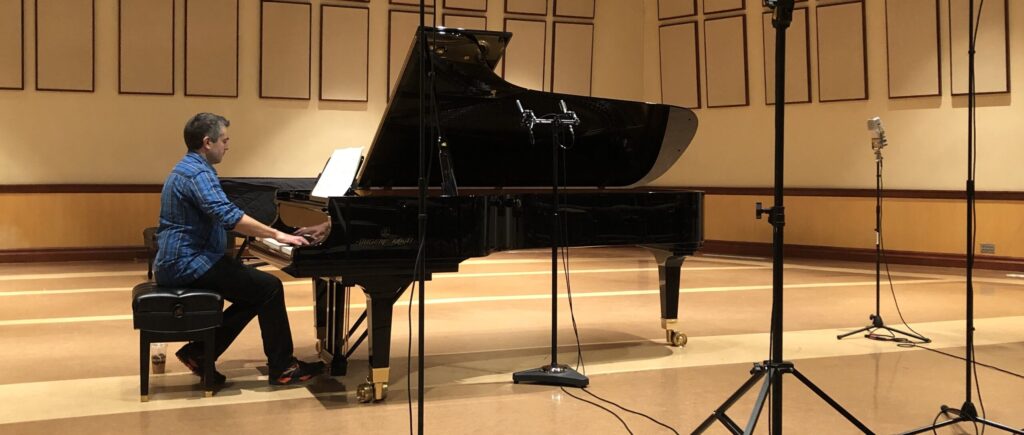
Jason Hardink – piano
Myrkriða, Ljósleiðá [Rider of Darkness, Path of Light]:
The monodrama Myrkriða, Ljósleiðá [Rider of Darkness, Path of Light] is a dramatic meditation on death, both the unknown and foreboding nature of its inevitability, as well as the imaginings of a resolved afterwards. Many individual theoretical and stylistic elements are employed: non-octave harmonies, various microtonalities including both equal-tempered and just-intonation microtunings, a variety of “leitmotif” like melodic motives; extended and developed rhythmic talas, large-scale formal proportional symmetries, and extended performing techniques such as: singing into the flute; a soprano part that requires percussion playing; various percussive and flamenco techniques in the guitar part; and bent vibraphone keys. This multi-dimensional musical language, supported by a strong rhythmic drive, serves as the foundation of Myrkriða, Ljósleiðá [Rider of Darkness, Path of Light]. With a text in Old Norse written by the composer, an ancient tongue blends two simultaneous stories: a difficult, violent, and painful journey toward the moment of death, represented by soprano and flute duo, and a recollection of the moment of death as remembered from a peaceful afterlife, where soprano and flute and joined by guitar and percussion. These two intertwined and interpolated stories build in intensity, approaching the moment of death from opposite directions in time, culminating in an ending a cappella soprano recitation, providing hope and solace.

Kirsten Ashley Wiest – soprano and percussion; Tara Schwab – flute, alto flute; Yuri Inoo – percussion; Michael Kudirka – guitar, additional percussion; Jeffrey Holmes – conductor, additional percussion
Texts & Translations
Urðarmána [Moon of Fate]:
I. Þat vera Urðarmána. Ok var bæði hregg ok rota…at Urðarmána kom inn hvert kveld sem annat.
(It was a moon of fate. Amidst both wind and rain…the moon of fate appeared every night as before.)
II. Vetr þann…sjúknuð. Mun hér eptir koma manndouðr.
(Winter-time…a great sickness. People will die here now.)
III. Ok var bæði hregg ok rota…Geirs Drottinn vaknaði, ok léz verr vera við Kristr alla tíma siðan.
(Amidst both wind and rain…Lord of the Spear awoke and said that from now on things would be worse between him and Christ.)
IV. Vind ek kyrri, vági á, ok svæfik allan sæ.
(I calm the wind, and the waves, and soften the whole sea.)
V. Svá sé yðr öllum innan rifja, sem þér í maura mornið haugi. Spá. Blót. Ríct gól (Viðrir). Ramt gól (Þundr). Bitra galdra.
(May you suffer within your ribs, your mound an anthill where you rot. Prophecy. Sacrifice. Mightily chanted (Stormer). Magically chanted (Thunderer). Powerful charms.)
VI. Einn, harmdrögg sleginn, grimmon tárom, hvert fellr blóðuct, úrsvalt, innfiálgt.
(Alone, shroud in the dew of sorrow, the bitter tears, are drops of blood, cold as rain, heavy.)
VII. Vindr var á hvass, ok fauk askan viða. Hann lá þar ok horfði í lopt upp ok gapði bæði munni ok nösum ok þulði nökkut. Urðarmána.
(A brutal gale began to blow. He lay on the peak of a cliff, staring up at the sky with his mouth wide open, reciting something. Moon of Fate.)
VIII. Þó kómu þar fljúgandi hrafnar tveir ok gullu hátt. Urðarmána.
(Amidst both wind and rain…Two ravens flew by and cawed loudly. Moon of Fate.)
IX. Vilk ek eigi gop geyja…sem þú feldir mér fár af höndum.
(I will not blaspheme the gods…as you saved me from near death.)
Myrkriða, Ljósleiðá [Rider of Darkness,Path of Light]:
I. Nátta (Night Falling)
Svört verða sólskin um eftir veðr öll vátyrd
(Dark grows the sun and soon come mighty storms.)
II. Myrkriða I (Rider of Darkness I)
Myrkriða er ygg rikr
Herjan þrunginn moði
Hergautr blár sem Hel
(Rider of Darkness, terrible, mighty,
Evil One, swollen with rage,
Army God, black as Hel.)
III. Dagan (Daybreak)
Hljoðr þoka likr aska
(Silent, mist like ashes.)
IV. Ljósleiðá I (Path of Light I)
Ljósleiðá sjór albár kyrrsky drúpar af lá
Grímavágr sǫngr hverr spá gala undir tunglskin
Himinioðurr gnata móti logr likr ísabrot
(Path of Light, pure blue-black sea, quiet clouds drip down like life-force blood,
Waves of shadows, singing every song of fate, scream under the moonlight,
Rim of the sky, crashes into the raging sea, like ice breaking.)
V. Myðr Nótt (Middle of the Night)
Vindsval á nithafjoll, hlǫkk af sút
(Cold wind on the dark crags, clash of winter-sorrow.)
VI. Myrkriða II (Rider of Darkness II)
Ór Myrkriða stukku eitr dropar
Ǫlfossa, rauðum dreyra af valr
Sökkvabekk skogul fara Valgrind
(Down from Rider of Darkness did venom drop,
Turbulent river, reddened with blood of the slain,
Sinking stream, raging to the Death Gate.)
VII. Haugaeldr (Grave-fire)
(Instrumental)
VIII. Ljósleiðá II (Path of Light II)
Ljósleiðá rísa íkr ǫlfossá
Stjarnar bera brott mein ógleði
Verahelzt ófǫir aðr nætr-elding
(Path of Light rises like a turbulent river,
The stars carry pain and sadness away,
It is darkest before dawn.)
IX. Myrkriða III (Rider of Darkness III)
Ek Myrkriða rata roðnar brautir ór Gram
Emk aptr of kominn dreyugr vek ek þik Leiðsla
Mœtta þinn ørlǫg Dauðir Dolgar heita þu
(I, Rider of Darkness, travel the blood-red road of Wrath,
I have returned blood stained, I await you by Leiðsla,
Meet your battle-fate, the Ghosts of the Dead demand you.)
X. Ótta (Last Part of the Night)
Kaldr myrkr ok þoka, hljoðr
(Cold darkness and mist, silent.)
XI. Myrkr (Darkness)
Logn alsvartr þrymja ok úrdetta
(Calm pure-black thunder and falling rain.)
XII. Ljósleiðá III (Path of Light III)
Minn Ljósleiðá kváma
Fallanðr frá myrkhiminn
Likr blóð frá banahǫgg
(My Path of Light has arrived,
Falling from the dark sky,
Like blood from the Death-blow.)
XIII. Sjóborg (Sunset)
Af malhrið sortnahugr dreyri straumr likr blársky
Ljósleiðá
(From the storm of metal my soul darkens, blood flows like a black cloud.
Path of light.)
XIV. Hljoðr (Silence)
Myrkriðá, Hljoðr, Ljósleiðá
(Rider of Darkness, Silence, Path of Light)
XV. Lykð/Upphaf (End/Beginning)
(Instrumental)
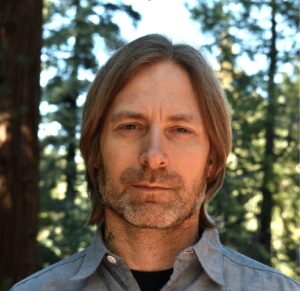
Jeffrey Holmes composes post-spectral, teleological music incorporating elements of mysticism and lyrical expression. His creative inspiration is rooted in primitive myths, transcendent legends, and dramatic elemental landscapes in their primal and violent natural states. As a traditionalist, he composes music for acoustic orchestral instruments, using standard notational methods; as a formalist, he works within a complex and unique non-octave diatonic, chromatic, and microtonal language; as a transcendentalist, he combines the inherent abstraction of sound with a greater meaning and possibility of interpretation through the use of lyricism and overt expression.
Holmes’ music has been described as “Music of raw power and vision…a particularly impressive combination of technical prowess and deep expression.” (Fanfare Magazine), “Captivating…haunting and slightly disorienting.” (Los Angeles Times), “Through his choice of pitch and rhythmic textures, stunning colors emerge.” (Talea Ensemble), “Interesting and musically arresting, music to be really heard and deserving of reflection.” (Society of Composers, INC.), and “Extremely sophisticated, an excellent example of exquisitely crafted sound.” (Percussive Notes).
Commissions, performances, and awards have come from the Los Angeles Philharmonic Association, Carnegie Hall, American Composers Forum, Guitar Foundation of America, the Talea Ensemble, the JACK, Penderecki, and Lyris String Quartets, Ensemble Variances (FR), the Firebird Ensemble, Piano Spheres, FretX Duo (Mak Grgić, Dan Lippel), and the Los Angeles Percussion Quartet, and from soloists Michael Kudirka, Kirsten Ashley Wiest, Nicholas Isherwood, Jason Hardink, Vincent Ranallo, Pierre Bibault, Lorenzo Marasso and Mark Menzies. His works have been performed at festivals including the Darmstadt Ferienkurs für Neue Musik (DE), Los Angeles Philharmonic’s “Green Umbrella” and “Noon to Midnight” (US), Etchings Festival (FR), Deal Festival (UK), Hear Now Festival (FR/US), Festival de los Rosas (ME), and at MicroFest LA, “Beyond: Microtonal Music Festival”, and the Laguna Beach Music Festival (US).
Holmes’ music is published by Composers Edition (London, UK), Doberman-Yppan/Les Productions d’OZ (Quebec, Canada), and Edition Svitzer (Copenhagen, Denmark), and has been recorded on MicroFest Records, Centaur Records, and Sono Luminus, distributed internationally by Naxos.
Jeffrey Holmes – Rider of Darkness, Path of Light
Executive Producer: John Schneider
Producers: Jeffrey Holmes, Scott Worthington, the Talea Ensemble, Aron Kallay
Engineer and Mixing: John Schneider, David Adamcyk, Aron Kallay
Editing: Scott Worthington, David Adamcyk, Aron Kallay
Mastering: Scott Fraser Architecture
Liner Notes: Jeffrey Holmes
Design: Erin Schneider
Photographs: John Schneider
Cover Photo: David Clode
All Compositions by Jeffrey Holmes, BMI
All works published by: Composers Edition (London, UK) – https://composersedition.com
Hagall (Haglaz) was made possible by a grant from the Jebediah Foundation New Music Commissions, with special thanks to Kate Vincent.
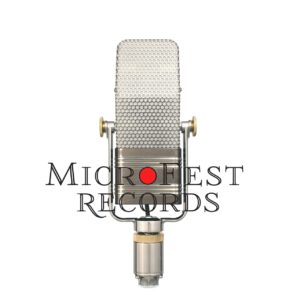
M•F 15
℗©2020 MicroFest Records, all rights reserved



